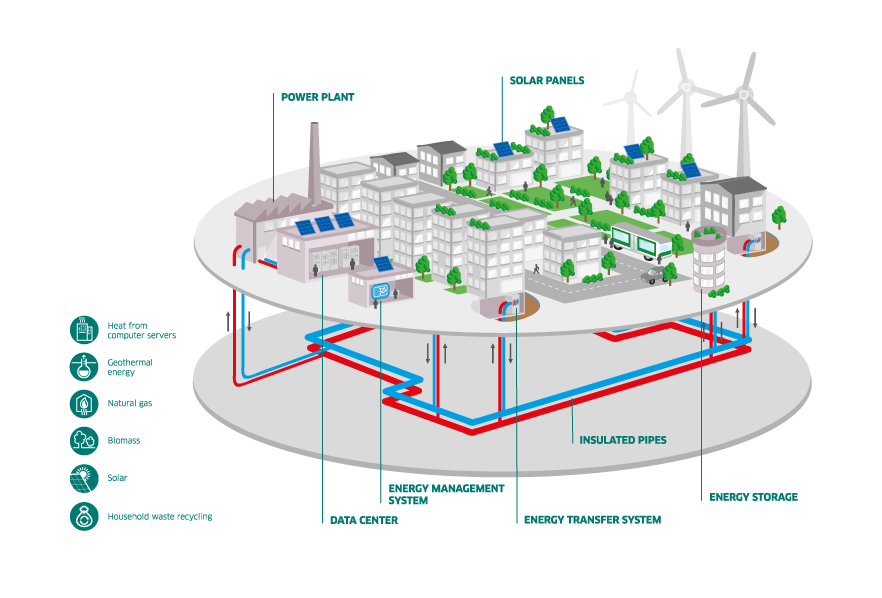Blog

What is a District Heating Network?
Posted on 20 October 2021 in Blog
Learn more about district heating and the benefits it can offer to communities.
District heating or heat network is a term used to describe a heating system which delivers heating and hot water to a network of buildings. One central plant will distribute heat to hundreds or in some cases, thousands, of properties through a series of underground pre-insulated pipes.
District heating systems are large in scale and typically serve domestic properties. There are currently over 17,000 district heat networks in the UK with just under 500,000 connections to them.

Image credit: Engie
District heat networks can use fuel sources such as gas, biomass, geothermal, heat pumps and even recovered heat from nuclear plants, industrial factories and water treatment facilities such as sewage networks.
The first heat pump district heat network was installed in Switzerland in 1977. It used heat recovered from the IBM servers. Today the network is still in place and the installed capacity is about 660 MW heat, utilizing treated sewage water, sea water, district cooling, data centers and grocery stores as heat sources. This example of heating shows us how heat can be recovered from many sources and used for a purpose - when otherwise it would be lost.
Here in the UK, heat from the London underground is being used to provide heating and hot water to 1,350 homes, a school and two leisure centres in Islington. It’s estimated by the Greater London Authority that there is enough unwanted heat in the city to provide as much as 38% of the city’s energy needs.
How does district heating work?
Heat is generated in a centralised location and then distributed to a number of connected buildings.
What are the advantages of district heating using heat pumps?
- Creates skilled employment opportunities - district heat networks are large projects requiring an array of knowledge and skill sets
- Carbon reduction and reduced reliance on fossil fuels
- Reduces fuel poverty
- Improved air quality
- Long-lasting infrastructure with reduced maintenance costs
What is the difference between district heating and shared ground loops?
Often the difference is considered to be the amount of power produced by the system. District heat networks usually have a far greater output catering to hundreds of properties whereas shared ground loops will deliver heat to 2-3 properties per borehole.
Have a question about using heat pumps for district heating or shared ground loops? Get in touch and we’ll be happy to help.
 Facebook
Facebook LinkedIn
LinkedIn Twitter
Twitter













